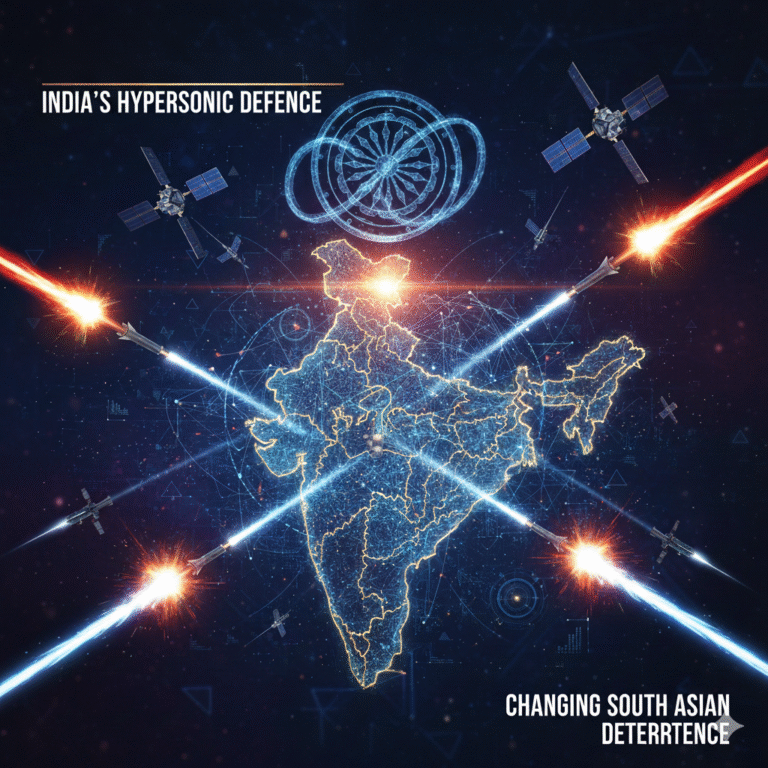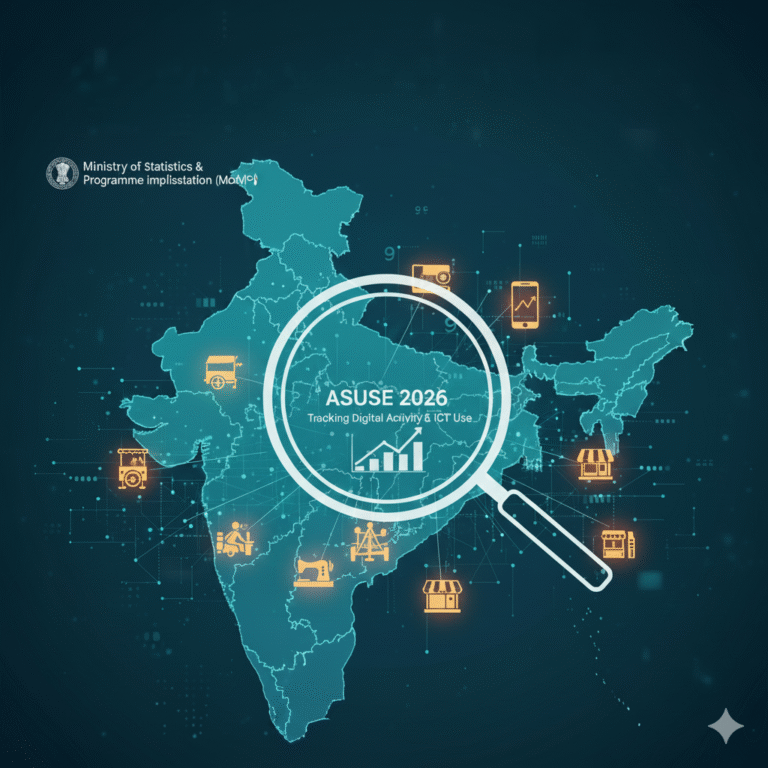In an era marked by hypersonic missiles, drone swarms, and fifth-generation fighter jets, the ability of a nation to defend its skies has never been more critical. India, situated in a complex geopolitical environment, has invested significantly in building a multi-layered and technologically sophisticated air defence network. This article explores the various advanced air defence systems deployed by India, the technological backbone supporting them, their strategic implications, and how these systems place India among the global leaders in aerial defence.
Understanding Air Defence Systems

Air defence systems are designed to detect, intercept, and destroy incoming aerial threats—such as enemy aircraft, ballistic and cruise missiles, and unmanned aerial vehicles (UAVs). These systems include radar arrays, surface-to-air missile (SAM) batteries, anti-aircraft guns, and electronic warfare tools.
1.1 Components of Air Defence
- Radar Systems: Used to detect and track enemy targets.
- Command and Control Centres: Integrate data and coordinate response.
- Missile Interceptors: Engage and destroy the threat.
- Anti-Aircraft Artillery: Conventional but still relevant against low-tech threats.
India’s Air Defence Strategy: A Layered Approach
India’s air defence strategy is built on a layered system to neutralise threats at various ranges and altitudes. This approach enhances redundancy and effectiveness.
2.1 Long-Range Defence: S-400 Triumf
- Developed by Russia, the S-400 is the crown jewel of India’s long-range air defence.
- Capable of intercepting targets up to 400 km away.
- Engages multiple targets simultaneously with high precision.
- Provides ballistic missile defence capability.
2.2 Medium-Range Defence: Akash Missile System
- Indigenously developed by DRDO.
- Effective against aircraft, cruise missiles, and drones up to 30 km.
- Cost-effective and ideal for deployment across multiple locations.
2.3 Close-In Defence: SPYDER, Barak-8, and QRSAM
- SPYDER (Israel): Short to medium-range system using Python-5 and Derby missiles.
- Barak-8 (India-Israel joint development): Medium to long-range naval and land variant.
- QRSAM: Quick Reaction Surface-to-Air Missile developed by DRDO.
Radar and Surveillance Infrastructure
India has built a wide surveillance network to ensure effective early-warning capabilities.
3.1 Key Radar Systems
- Rohini and Ashwini Radars: Developed by BEL for low- and medium-altitude tracking.
- Arudhra Radar: Medium-power radar used for surveillance.
- Aerostat Radars: Elevated radar platforms to detect low-flying threats.
3.2 Integration with Satellites and AEW&C
- DRDO’s Netra AEW&C aircraft provides airborne surveillance.
- Coordination with ISRO satellites for real-time imagery.
Technological Innovation and Indigenous Development
India’s goal is to reduce dependence on foreign defence imports.
4.1 DRDO’s Role
- Development of Akash, QRSAM, and XR-SAM.
- Focus on next-generation weapons and AI-powered response systems.
4.2 Private Sector Involvement
- Companies like Bharat Forge, L&T, and Tata Advanced Systems are contributing.
- Focus on modular platforms, faster production cycles, and export capabilities.
Integration and Interoperability
To create a seamless air defence net, different systems must work in tandem.
5.1 IACCS (Integrated Air Command and Control System)
- A real-time communication and control system.
- Links all air force stations, radar sites, and missile batteries.
5.2 Joint Operations
- Coordination between the Air Force, Army, and Navy.
- Enables synchronized defence response during attacks.
Emerging Threats and Future Readiness
With rapid advances in aerospace and drone technologies, India is future-proofing its defences.
6.1 Hypersonic Weapons
- India is developing the Hypersonic Technology Demonstrator Vehicle (HSTDV).
- Plans to counter hypersonic threats with directed-energy weapons.
6.2 AI and Automation
- Using AI for predictive threat modelling.
- Automated target recognition and response.
Geopolitical Implications
Air defence capability acts as a deterrent and strategic bargaining chip.
7.1 Deterrence Against China and Pakistan
- Strategic deployment of S-400 along western and northern borders.
- Enables early neutralization of threats before entering Indian airspace.
7.2 Defence Diplomacy
- India’s indigenous systems are potential exports to ASEAN and African countries.
Challenges Ahead
Despite achievements, challenges persist.
8.1 High Cost and Maintenance
- Advanced systems like S-400 and Barak-8 are expensive.
- Require continuous upgrades and logistical support.
8.2 Cybersecurity Risks
- Increasing risk of cyber attacks on command systems.
- Need for hardened and redundant communication protocols.
Conclusion
India’s air defence network is a testament to its strategic foresight and commitment to national security. With a blend of imported technology and indigenous innovation, the country has built a robust shield against a wide spectrum of aerial threats. As regional tensions persist and new threats emerge, India continues to evolve its defence strategy to stay ahead of adversaries.
❓ Frequently Asked Questions (FAQs)
- What are the main components of India’s air defence system?
- India’s air defence comprises long-range systems like S-400 Triumf, medium-range systems like Akash, short-range systems like Barak-8, and surveillance assets like Netra AEW&C.
- India’s air defence comprises long-range systems like S-400 Triumf, medium-range systems like Akash, short-range systems like Barak-8, and surveillance assets like Netra AEW&C.
- How does the S-400 Triumf enhance India’s defence capabilities?
- The S-400 can engage multiple aerial targets at ranges up to 400 km, providing a significant boost to India’s long-range interception capabilities.mint
- The S-400 can engage multiple aerial targets at ranges up to 400 km, providing a significant boost to India’s long-range interception capabilities.mint
- What is the role of the Akash missile system?
- Akash is an indigenous medium-range surface-to-air missile system designed to protect against aircraft and drones up to 30 km away.
- Akash is an indigenous medium-range surface-to-air missile system designed to protect against aircraft and drones up to 30 km away.
- How does Barak-8 complement India’s air defence?
- Barak-8 is a medium to long-range missile system developed jointly with Israel, effective against various aerial threats, including missiles and aircraft.
- Barak-8 is a medium to long-range missile system developed jointly with Israel, effective against various aerial threats, including missiles and aircraft.
- What is VSHORAD, and how is it significant?
- VSHORAD (Very Short Range Air Defence) is a portable missile system developed by DRDO to neutralize low-altitude aerial threats like drones and helicopters.Wikipedia
- VSHORAD (Very Short Range Air Defence) is a portable missile system developed by DRDO to neutralize low-altitude aerial threats like drones and helicopters.Wikipedia
- How does India’s air defence compare to Pakistan’s?
- India’s air defence is more advanced, featuring a multi-layered system with superior technology like the S-400, whereas Pakistan relies on systems like the Chinese HQ-9.Business Today
- What recent events tested India’s air defence systems?
- During Operation Sindoor, India’s air defence systems, including the S-400, successfully intercepted multiple aerial threats from Pakistan.Hindustan Times Republic World mint
- During Operation Sindoor, India’s air defence systems, including the S-400, successfully intercepted multiple aerial threats from Pakistan.Hindustan Times Republic World mint
- How integrated are India’s air defence systems?
- India employs the Integrated Air Command and Control System (IACCS) to coordinate various air defence assets for a unified response.
- India employs the Integrated Air Command and Control System (IACCS) to coordinate various air defence assets for a unified response.
- What role does DRDO play in India’s air defence?
- DRDO is pivotal in developing indigenous air defence systems like Akash and VSHORAD, reducing reliance on foreign technology.
- DRDO is pivotal in developing indigenous air defence systems like Akash and VSHORAD, reducing reliance on foreign technology.
- Are there any plans to upgrade existing air defence systems?
- Yes, India plans to upgrade systems like the Su-30MKI with advanced radars like the Virupaaksha AESA to enhance detection and tracking capabilities.
- Yes, India plans to upgrade systems like the Su-30MKI with advanced radars like the Virupaaksha AESA to enhance detection and tracking capabilities.
- How does the Netra AEW&C system function?
- Netra is an airborne early warning and control system that provides real-time surveillance and command capabilities to detect and track aerial threats.
- Netra is an airborne early warning and control system that provides real-time surveillance and command capabilities to detect and track aerial threats.
- What is the significance of the Integrated Air Command and Control System (IACCS)?
- IACCS integrates all air defence assets, ensuring seamless communication and coordination for effective threat neutralization.
- IACCS integrates all air defence assets, ensuring seamless communication and coordination for effective threat neutralization.
- How does India’s air defence address drone threats?
- India employs systems like VSHORAD and radar networks to detect and neutralize drone threats effectively.
- India employs systems like VSHORAD and radar networks to detect and neutralize drone threats effectively.
- What challenges does India face in air defence?
- Challenges include high costs of advanced systems, maintenance complexities, and the need for continuous technological upgrades.
- Challenges include high costs of advanced systems, maintenance complexities, and the need for continuous technological upgrades.
- How does India’s air defence strategy ensure national security?
- By deploying a multi-layered defence system integrating various technologies and systems, India ensures comprehensive protection against diverse aerial threats.
- By deploying a multi-layered defence system integrating various technologies and systems, India ensures comprehensive protection against diverse aerial threats.









+ There are no comments
Add yours